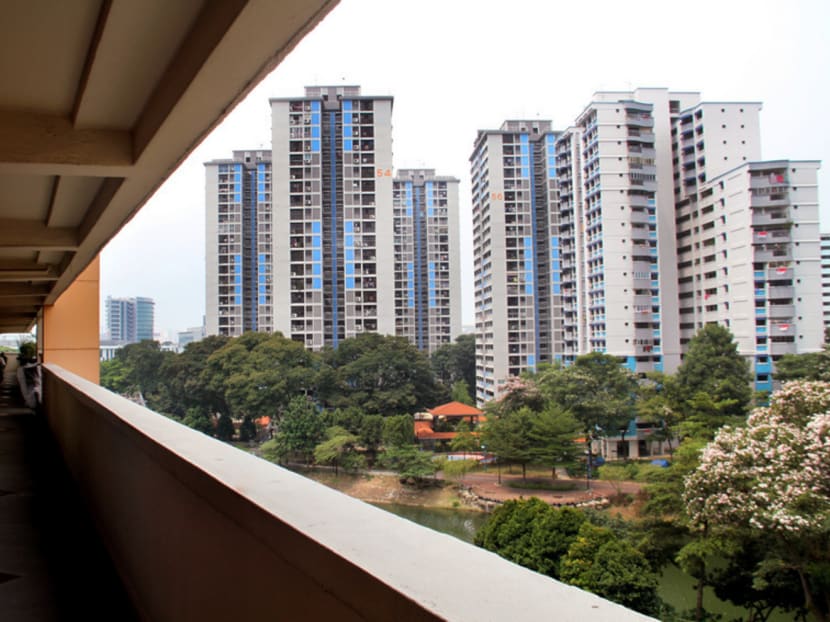Weigh up risks to combat rate rises
All eyes are on the United States Federal Reserve as it looks towards raising interest rates in the coming weeks or months on the back of renewed strength in the world’s largest economy.

Homeowners have benefited from low SIBOR rates for the last few years, but they have risen this year with the weakening Singapore dollar. If the United States Federal Reserve raises interest rates, as many analysts expect, they will climb further. TODAY file photo
All eyes are on the United States Federal Reserve as it looks towards raising interest rates in the coming weeks or months on the back of renewed strength in the world’s largest economy.
Back home in Singapore, with the cost of borrowing tied to US interest rates, many homeowners are concerned about how much the Singapore Interbank Offered Rate (SIBOR) will rise and how this will affect their home loan repayments.
What can homeowners do to mitigate the impact of rising interest rates? Does it make sense to go for a fixed rate or a floating rate at this point?
The SIBOR and the Swap Offer Rate (SOR) are reference rates used by financial institutions to structure home-loan packages offered to property buyers in Singapore. SIBOR, the more widely used in pricing home loans, is the cost of funds for banks to lend to each other, and the rate is calculated daily by the Association of Banks in Singapore.
Think of it simplistically as the bank’s cost price. The bank then imposes a spread on the cost of their funds, which you can think of as the profit margin. So when you see three-month SIBOR plus 1.25 per cent, the three-month SIBOR is its cost price and the 1.25 per cent is the bank’s profit margin. So if the three-month SIBOR is currently at 1 per cent, then the total interest rate you will be charged is 2.25 per cent.
The SIBOR rate is fixed on the first banking day of the month. There are one, three, six and 12-month variants of the SIBOR rate. This means that your SIBOR rate will be refreshed once for the duration that you select.
So, for example, the three-month SIBOR will be refreshed every three months from the date that your loan is disbursed. The higher the number, the higher the interest rates are. The three-month SIBOR base rates are most commonly used, but some banks offer the flexibility for you to choose.
NO ESCAPING FROM HIGHER INTEREST RATES
As the SIBOR increases, a consumer’s home loan interest rate will increase as well. Since the banks have no real control over the SIBOR rate itself, they will use the spread to compete for your business.
There is no escaping SIBOR’s influence over your home loan — be it on a floating or fixed interest rate package, or board rate package. Despite the name, fixed rates don’t last forever. Once the fixed term expires, your loan package will go to a floating rate.
Homeowners in Singapore have been enjoying low SIBOR rates hovering around 0.35 per cent to 0.40 per cent for the last few years. Only this year did the rate climb to about 0.8 per cent as the Singapore dollar continued to weaken, before finally reaching the 1 per cent mark this month. SIBOR may very well hover around 1 to 1.2 per cent for the remainder of this year.
COST CONSIDERATIONS WHEN REFINANCING
Since the beginning of the year, there has been a big uptake of consumers refinancing or repricing their home loans as interest rates started to climb. It is a good habit to do a status check on your mortgage every three to four years. You can use sites such as MoneySmart.sg to compare the interest rates you are paying against what is being offered in the market.
Interest rates are not the only thing to look out for. You should be aware that you may incur a cost when the lender refinances your mortgage. Legal fees for switching banks, for example, can amount to about S$3,000. However, despite the additional cost, you may find yourself saving thousands of dollars in the long term because you’re shaving S$100 to S$200 off your monthly payments.
RISK CONSIDERATIONS WHEN REFINANCING
Fixed rates offer the benefit of locking in the rates, so you know exactly how much you are going to be paying monthly for the duration of the term.
The problem is that fixed rates are typically only offered for three years maximum. You have to be aware that when your fixed term expires, you will be refinancing in a totally different interest rate environment and rates may have risen even further.
The course of action you should take depends on your personal preference and risk appetite. If you are really worried about rates skyrocketing in the short term, and need to be able to project your monthly loan repayments, then go for a fixed rate mortgage.
If you are comfortable with a bit of risk, then go for a rate that offers a low spread throughout the tenure of the loan. However, avoid home loan packages that are pegged to the bank’s internal board rates. While these rates may appear attractive at first, the bank can change them any time at its discretion.
Do your homework and compare the latest home loan rates offered by the various lenders and talk to a mortgage broker to get recommendations based on your risk profile.
About the author: Vinod Nair is founder and chief executive of MoneySmart.sg, a personal finance portal founded in 2009.





